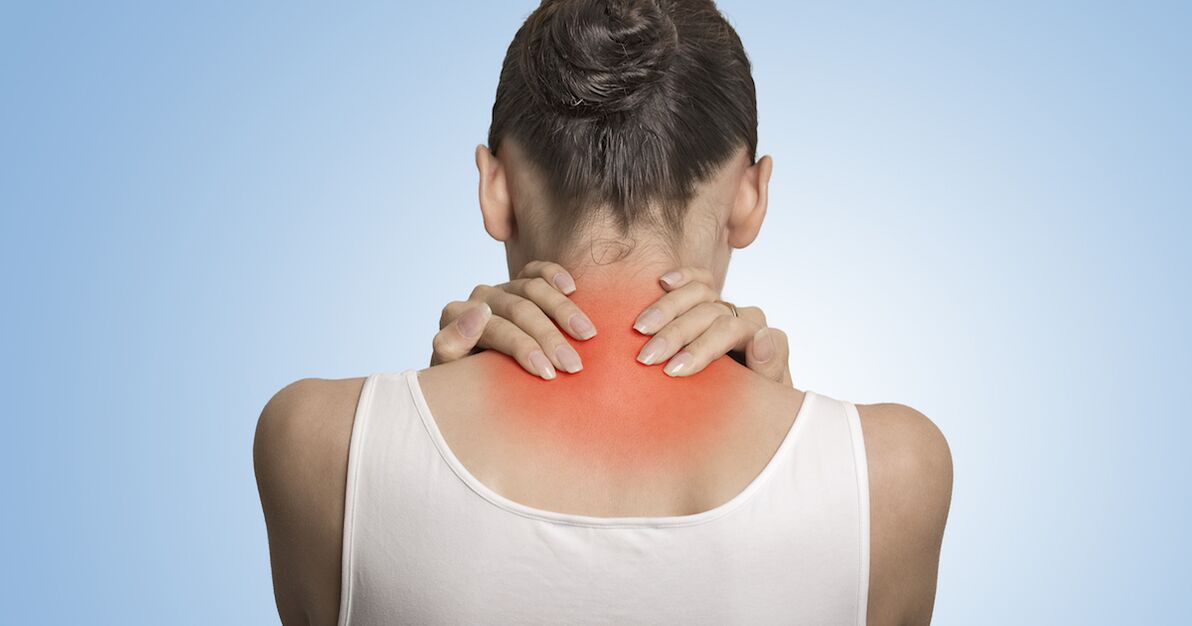
The modern sedentary lifestyle is the reason for the active rejuvenation of a common disease such as cervical osteochondrosis. "IT people", drivers and other "sitting" professions are increasingly complaining about it. According to doctors, even 17-year-olds complain of cervical osteochondrosis. As a rule, these are active users of smartphones.
The fact is that the human spine weighs between 12 and 27 kg, depending on the inclination of the gadget. The longer a person spends in this condition, the faster the intervertebral discs wear out, pain in the neck and back, and then osteochondrosis. Doctors strongly recommend starting treatment as soon as the first symptoms appear, otherwise the consequences of neglecting your health may be irreversible.
What is this disease - cervical osteochondrosis?
Of all the parts of the spine, the most mobile is the neck. There are seven vertebrae connected by elastic intervertebral discs. Inside each disc is an annulus fibrosus with a pulposus nucleus.
A metabolic disorder may indicate the appearance of osteochondrosis, in which the intervertebral disc loses strength and elasticity. In the future, under the influence of loads, a fibrous ring emerges, cracks appear on it.
There are many nerve channels and blood vessels in the cervical region to nourish the brain, and the vertebrae are close together. Thus, moderate deformation of one of the vertebrae leads to compression of such nerve structures and blood vessels.
What are the symptoms of cervical osteochondrosis and what are their dangers?
The first signs of the disease are tension and tingling in the neck muscles, pain that can spread to the back of the head, shoulder blades and arms. When cerebral circulation is disrupted due to osteochondrosis, migraine, vegetovascular diseases, hypertension appear. The disease also affects the cardiovascular and respiratory systems, impairing overall coordination, hearing and vision.
If treatment is not started on time, cervical osteochondrosis can cause intervertebral disc herniation, hernias, and vertebral artery syndrome.
Diagnosis of cervical osteochondrosis
Diagnosis and treatment of osteochondrosis of the cervical spine is carried out by highly qualified specialists - orthopedic traumatologists and neurologists specializing in vertebrology. First of all, the doctor determines the severity of the symptoms of the disease. Possible causes of the appearance are also identified - harmful working conditions, sick habits, the presence of injuries.
If necessary, additional examination of the patient is recommended:
- X-ray shows the degree of instability of the cervical vertebral bodies.
- MRI can detect the formation of protrusions, tears and the condition of soft tissues.
- Ultrasound (Dopplerography) of the vessels of the head and cervical region is recommended for cerebrovascular accidents, migraines. This examination allows you to determine the condition of the vertebral arteries, veins, as well as the presence of pathological bending and vascular curves. Ultrasound also allows you to see the violation of the openness of blood vessels. Taken together, all of these examinations provide an overview of the condition of the cervical spine to establish the correct diagnosis and determine the most effective treatment and subsequent rehabilitation to ensure a long-term outcome.
Features of treatment of osteochondrosis of the cervical spine
The treatment aims to improve the blood supply to the tissues surrounding the brain and spinal cord, increase the mobility of obstructed segments of the spine, and reduce pain and myotonic syndrome.
Various methods are used to achieve these goals:
- Massages with light orthopedic adjustments to improve blood flow to the cervical spine.
- Short arm method for spine correction. This non-traumatic method allows you to effectively remove functional blocks and restore segment mobility.
- Shock wave therapy to improve metabolic processes, renew cells and affected tissue areas, and relieve muscle spasms.
- Carboxytherapy (therapeutic effect of carbon dioxide on the tissues of the spine and joints).
- Physiotherapeutic treatment methods (electrotherapy and magnetotherapy).
- Drug treatment in combination with the above methods (blockades, multisonal and other injections). Medications are used only in some cases to relieve acute conditions with myotonic (soft tissue edema) and pain syndrome.
Exercise therapy for osteochondrosis of the cervical spine
Physiotherapy exercises are becoming increasingly popular in the treatment of diseases. It is used not only in remission, but also as a prevention of cervical osteochondrosis. Exercise improves blood circulation, strengthens the muscle corset, removes restrictions on the mobility of the vertebrae, increases the range of motion and allows you to restore neuromuscular connections.
Effective results are obtained with therapy according to the Finnish-German David method, conducted at the Institute of Vertebrology and Rehabilitation. A complex computer test detects weakness of the cervical spine, muscle asymmetry in the cervical region, dominance or lack of development of the muscular system. Based on these indicators, the possible load is calculated and an individual training program is formed on innovative medical simulators. A course of 24 sessions should be conducted twice a year for treatment and consolidation of results. Training results in simulators are usually visible after 5-6 sessions.
Self-medication is not an option
Symptoms of cervical osteochondrosis are often overlooked or self-medicating. At the same time, it can cause serious complications. A person is especially at risk when self-medicating or using traumatic manual techniques and physical manipulations, which not only do not cure, but can even aggravate the disease. It is better to entrust the treatment of cervical osteochondrosis to qualified specialists who will choose for you elegant, modern and effective methods that exclude the possibility of damage to the affected cervical spine.













































